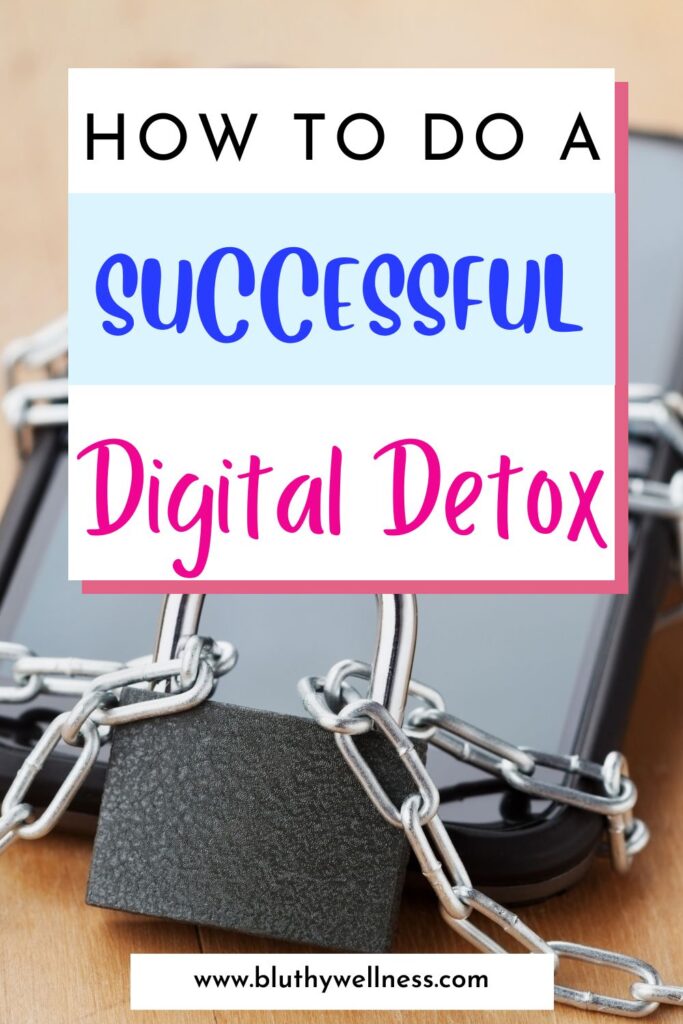Do you ever feel like your phone is glued to your hand? Like you just cannot live without checking your phone? Or maybe you catch yourself scrolling through social media, wondering where the time went? You’re not alone. On average, most of us spend over 7 hours a day on screens, whether it’s our phones, laptops, or TVs. While technology makes life easier, too much screen time can make us feel tired, stressed, and even unhappy.That’s where a digital detox comes in.
A digital detox is like giving your mind and body a much-needed break from screens. Think of it as hitting the reset button for your health, focus, and overall happiness. Taking time away from screens can help you feel more relaxed, improve your sleep, and even bring you closer to the people you care about.
But don’t worry—this doesn’t mean you have to give up your phone forever! A digital detox is all about finding balance. It’s about learning how to use technology in a way that works for you, not against you.
In this guide, I’ll show you how to take simple, practical steps toward spending less time on screens. You’ll learn how a digital detox can boost your mental health, reduce stress, and give you more time for the things that matter most. Whether it’s enjoying a hobby, spending time with friends, or simply feeling less overwhelmed, this is your chance to make a change. As a bonus, you can download your 30 day digital detox below for FREE by entering your name, email and clicking the blue button.
Let’s dive into how to unplug, refresh, and reclaim control over your life—one step at a time!
What is a Digital Detox?
A digital detox is when you take a break from using digital devices like phones, tablets, computers, and even TVs. Think of it as a way to step back, clear your mind, and focus on the world around you. It’s not about giving up technology forever—it’s about finding balance and using it more mindfully.
The purpose of a digital detox is to reduce stress, improve mental health, and regain control over how you spend your time. By taking breaks from screens, you give your brain a chance to rest, your relationships space to grow, and your body relief from the physical strain caused by staring at screens for too long.

Save me please!
Common Misconceptions About Digital Detox
Some people think a digital detox means cutting off all technology forever. That’s not true! It’s about creating boundaries, not living in a tech-free cave. Others believe they don’t need one because they aren’t “addicted” to their devices. But if you find yourself constantly checking your phone or feeling anxious without it, a detox could help.
Another myth is that a digital detox has to be extreme, like avoiding all screens for a month. It doesn’t. Small, intentional changes can make a big difference, like having phone-free dinners or limiting social media use before bed.
Types of Digital Detox
There’s no one-size-fits-all approach. Here are a few types to consider:
- Partial Digital Detox
In this type, you focus on cutting back on certain activities, like social media or gaming. You still use your devices, but only for essential tasks like work or communication. - Full Digital Detox
This is when you unplug entirely for a set time, like a weekend or a vacation. It’s perfect for resetting your habits and reconnecting with yourself and others. - Scheduled Breaks
Instead of cutting out screens completely, you schedule specific times for breaks. For example, no screens after 8 PM or setting aside Sundays as tech-free days. - Micro Detox
These are short, daily breaks, like going for a walk without your phone or having a “no screens at the table” rule. It’s a great way to start if you’re not ready for a longer detox.
By choosing the type that fits your lifestyle, a digital detox can feel manageable and rewarding. It’s about small steps toward a healthier relationship with technology.
Why Digital Detoxing is Essential in Today’s World
It’s no secret—we spend a lot of time on screens. From scrolling through social media to binge-watching shows, technology has become a big part of our lives. While it connects us and makes things easier, too much screen time can hurt our health and well-being. Let’s explore why taking a break from screens is so important.
The Rise of Screen Addiction
Have you ever picked up your phone just to check something quick, and suddenly an hour has passed? You’re not alone. Many of us feel glued to our screens without realizing it. Experts call this screen addiction, and it’s a growing problem worldwide.
Spending too much time on screens can lead to:
- Mental exhaustion from constant notifications and multitasking.
- Physical issues like headaches, eye strain, and poor posture.
- Disrupted sleep because blue light from screens tricks your brain into staying awake creating an inconsistent nighttime routine.
The good news? A digital detox can help you regain control and feel refreshed. Join the 30 day digital detox challenge for FREE below by inserting your name, email and clicking the blue button.
Mental Health Benefits of Reducing Screen Time
Our minds need rest, just like our bodies. Constant screen use can cause stress, anxiety, and even feelings of loneliness. Think about it—seeing perfectly curated lives on social media can make us compare ourselves to others. and equally strain our relationship with God.
By taking a break from screens, you give yourself the chance to:
- Feel calmer and reduce stress levels.
- Sleep better without the late-night scrolls.
- Boost your mood by focusing on real-life connections and activities.
Imagine waking up feeling rested and enjoying your day without the pressure of checking your phone first thing. A digital detox makes this possible.
Deeper Connections and Better Communication
Technology helps us stay in touch, but it can also create barriers. Have you ever been in a room where everyone was on their phones? It’s hard to connect when screens get in the way.
When you step away from screens, you can:
- Have more meaningful conversations without distractions.
- Spend quality time with family and friends.
- Strengthen your relationships by being fully present.
These moments matter, and they remind us that real-life connections are irreplaceable.
Taking a digital detox isn’t about ditching technology forever. It’s about using it wisely and giving yourself the time to recharge. By unplugging, you’ll not only feel better but also create space for the things that truly matter.
The Benefits of Digital Detoxing
Improved Mental Health: Reduced Anxiety, Better Sleep, and Less Comparison
Ever feel like your brain is running on overdrive? Constant notifications and endless scrolling can amp up anxiety without you even noticing. Digital detoxing is like hitting the “refresh” button for your mind. When you spend less time glued to screens, your brain gets a break. This leads to lower stress levels and better mental clarity.
And let’s talk about sleep. Blue light from devices messes with your melatonin, the hormone that helps you sleep. By unplugging before bedtime, you set the stage for deeper, more restful sleep and creates a healthy nighttime routine. Plus, stepping away from social media means less comparing yourself to highlight reels. You’ll feel lighter and more confident in your own journey.
Action Tip: Try a “no screens 30 minutes before bed” rule to see how it transforms your sleep and mood!
Enhanced Productivity: Fewer Distractions and Increased Focus
Ever sat down to do one thing on your phone, only to look up an hour later after falling into a TikTok spiral? You’re not alone. Screens are productivity black holes. When you detox, you cut out distractions and make room for laser-sharp focus.
Imagine this: Instead of checking your phone 50 times during a project, you actually finish early. Sounds magical, right? Detoxing helps you reclaim your time and use it wisely. You’ll be amazed at how much you can accomplish when you’re not juggling constant digital interruptions.
Reflective Question: What could you achieve today if you cut your screen time in half?
Physical Health Perks: Reduced Eye Strain and Improved Posture
Raise your hand if you’ve ever felt like your eyes were about to fall out after a screen binge. That’s digital eye strain talking. Less screen time means fewer headaches, less squinting, and happier eyes.
And don’t even get me started on “tech neck.” Constantly looking down at your phone wrecks your posture and can cause chronic pain. By taking breaks from screens, you’ll sit taller, feel better, and maybe even avoid that chiropractor visit.
Humor Break: Think of detoxing as a gift to your future self—fewer wrinkles from squinting and fewer hunchbacks in family photos.
Stronger Relationships: More Meaningful Face-to-Face Interactions
Have you ever had a conversation with someone who couldn’t stop looking at their phone? Frustrating, right? Detoxing helps you be more present in your relationships. You’ll have deeper conversations and actually remember what people say.
Putting your phone away shows others that you value their time and connection which actually builds trust. It’s a small step that makes a huge difference. Plus, you might rediscover the joy of uninterrupted laughter or a good heart-to-heart chat.
Action Tip: Make meals a phone-free zone. Watch how quickly it strengthens your connections!
Boosted Creativity: More Time for Hobbies and Offline Exploration
When was the last time you picked up a paintbrush, wrote a poem, or simply stared at the clouds? Screens steal time from creativity. By unplugging, you free up mental space to explore new hobbies or revisit old ones.
Without constant input from digital noise, your brain gets a chance to wander and dream. That’s when creativity thrives. You might even discover talents you didn’t know you had!
Reflective Question: If you had one extra hour today without screens, what creative project would you start?
How to Know if You Need a Digital Detox
In our tech-driven world, it’s easy to become overly attached to screens. But how do you know when it’s time to unplug? Let’s explore some signs and self-reflection questions to help you decide if a digital detox is right for you.
Recognizing Signs of Screen Addiction
Screen addiction can sneak up on anyone. Here are some common indicators:
- Constant Urges: Do you feel a persistent need to check your phone or computer, even without notifications? It can also show up as constantly feeling like your phone is ringing or buzzing when its actually not. This compulsion is a hallmark of screen addiction.
- Neglecting Responsibilities: Is your digital device use interfering with work, school, or household duties? Prioritizing screen time over essential tasks can signal a problem.
- Social Withdrawal: Do you choose screen time over in-person interactions? Avoiding social activities in favor of digital engagement may indicate an unhealthy balance.
- Failed Attempts to Cut Back: Have you tried to reduce your screen time without success? Difficulty in limiting usage suggests a deeper issue.
Questions to Ask Yourself
Reflecting on your digital habits can provide clarity. Consider these questions:
- Do I Feel Anxious Without My Phone?: If being away from your device causes stress or discomfort, it might be time to evaluate your dependency.
- Is Screen Time My Primary Leisure Activity?: Relying solely on digital devices for entertainment can limit your experiences and connections.
- Do I Use Screens to Escape Negative Emotions?: Turning to devices to avoid feelings like boredom or sadness can be a coping mechanism worth addressing.
Identifying Your Most Time-Consuming Digital Habits
Understanding where your time goes is crucial. Here’s how to assess your digital consumption:
- Track Your Usage: Many devices offer screen time reports. Review these to see which apps or activities dominate your day.
- Set Usage Goals: Determine what you consider a healthy amount of screen time and compare it to your current habits.
- Reflect on Content Quality: Assess whether the digital content you consume adds value to your life or simply fills time.
By honestly evaluating these aspects of your digital life, you can decide if a digital detox is a beneficial step toward improved well-being.
Preparing for a Successful Digital Detox
Starting a digital detox can feel overwhelming, especially if you’ve grown used to being connected 24/7. But don’t worry—you’re not alone, and taking small, intentional steps can make a big difference. Preparing ahead ensures you stay on track and enjoy the process. Here’s how to set yourself up for success:
1. Set Realistic Goals and Expectations
First things first: don’t aim for perfection. It’s tempting to think you’ll immediately go a full day without checking your phone, but that’s like expecting to run a marathon without training. Start small. For instance, if you spend five hours scrolling through social media daily, aim to cut it down to three. Gradual changes are more sustainable and less intimidating.
Think about why you’re doing this. Are you trying to sleep better? Be more present with loved ones? Boost your focus at work? Knowing your “why” will keep you motivated. Write it down somewhere visible, like a sticky note on your desk, as a daily reminder.
Example: Jane, a busy college student, realized her late-night TikTok binges were hurting her sleep. Her first goal? No screens 30 minutes before bed. Once she nailed that, she extended it to an hour.
2. Inform Friends and Family
Letting people know about your detox can make things smoother. Imagine planning a screen-free weekend, only to have your best friend flood your phone with memes. By sharing your plan, you set expectations and reduce pressure to respond instantly.
Keep it simple: “Hey, I’m doing a digital detox to focus on my mental health. I might be slower to reply, but I’ll catch up later!” Most people will understand and might even be inspired to join you.
Example: When Mark told his family about his detox, they decided to make Sunday dinners phone-free. This not only supported his goal but strengthened their bond as a family.
3. Choose a Timeframe That Works for You
Be realistic about when you’ll start and how long you’ll detox. If your work schedule is packed or you’re planning a big event, it might not be the best time. Instead, pick a day or week when things are calmer.
You can also experiment with different timeframes. A weekend detox is perfect for dipping your toes in, while a month-long challenge might help reset deeper habits. There’s no right or wrong—just choose what feels manageable for you.
Example: Sarah, a marketing professional, tried a “phone-free Friday evening” every week. She found it so refreshing that she gradually expanded to Saturday mornings, enjoying uninterrupted time for her hobbies.
Bonus Tip: Plan Activities to Fill the Gaps
Before you unplug, think about what you’ll do with the extra time. Read a book, take a walk, try a new recipe, or reconnect with an old friend. Having a plan makes it easier to resist the urge to reach for your phone out of boredom.
Key Takeaway: Setting clear goals, involving your circle, and starting with realistic timeframes are the foundation of a successful digital detox. You don’t have to be perfect; even small changes can bring big benefits.
Ready to start your journey? Begin with one step today by joining the 30 day digital detox challenge below—you’ve got this!
Simple Steps to Start Your Digital Detox
Starting a digital detox might sound overwhelming, but it doesn’t have to be. The key is to take small, manageable steps. Here’s how you can begin:
Gradual Reduction of Screen Time
You don’t need to go cold turkey on your devices. Instead, start by cutting back a little at a time. For example:
- Avoid using your phone during meals. Keep it in another room or on silent mode. This encourages you to focus on the food and the company around you.
- Set a timer to limit social media scrolling. Many apps let you track your usage and notify you when you’ve hit your daily limit.
By making small changes, you’ll ease into the detox without feeling deprived. Over time, these habits become second nature.
Why this helps: Studies show that reducing screen time improves focus and reduces anxiety, especially when done gradually.
Establishing Phone-Free Zones
Create spaces where digital devices are off-limits. These zones could include:
- Your bedroom: Charge your phone outside the bedroom and use an alarm clock instead. This helps you wind down and sleep better.
- The dining table: Make meals a tech-free time for meaningful conversations and mindfulness.
- The living room: Dedicate this area to reading, hobbies, or quality time with family.
Start with one zone and build from there. These small boundaries can have a big impact on your mental health.
Why this helps: Research highlights that phone-free zones encourage deeper connections and reduce distractions.
Creating a Daily Schedule
Structure your day to include offline activities. Planning ahead reduces the urge to pick up your phone out of boredom. Some ideas include:
- Morning walks or yoga sessions instead of scrolling through your phone.
- Dedicated time for hobbies like painting, journaling, or gardening.
- Socializing with friends or family in person, rather than texting or video calling.
Write down your schedule and stick to it. Seeing your offline activities in writing makes them feel more intentional.
Why this helps: Filling your time with fulfilling offline activities makes it easier to stay away from screens.
These steps are simple yet powerful. Start with one or two, and slowly build a routine that works for you. Remember, it’s not about perfection—it’s about progress.
Pro Tip: Use apps like Freedom or Forest to block distracting sites or gamify your detox journey.
Ready to take your first step? Put your phone away during your next meal and enjoy the moment—you’ll feel the difference!
Tips for Staying Committed to Your Digital Detox
Starting a digital detox feels great—but staying committed can be challenging. Life’s demands and the pull of notifications make it easy to slip back into old habits. But don’t worry! With a few simple strategies, you can stick to your goals and make this a sustainable lifestyle change.
1. Replace Screen Time with Healthier Habits
Think about the activities you’ve been meaning to enjoy more—reading a book, going for a walk, or trying a new hobby. These offline activities don’t just fill the time; they nourish your mind and body.
For example, instead of scrolling through social media before bed, grab a journal and reflect on your day. Write down three things you’re grateful for. Or, if you usually binge-watch shows in the evening, swap one episode for 30 minutes of yoga or stretching. These small changes make a big difference over time.
Pro Tip: Create a list of “screen-free go-to activities.” Keep it somewhere visible, like on your fridge or desk, to remind yourself when temptation strikes.
2. Use Apps and Tools to Track Your Progress
Ironically, technology can help you detox from technology. There are apps designed to limit screen time, block distractions, and keep you on track.
For instance, try using Forest (where you grow virtual trees by staying off your phone) or Stay Focused to block social media during specific hours. These tools provide a sense of accomplishment and help you visualize your progress.
Tracking your screen time reduction can also be motivating. Review your weekly reports and celebrate the improvement, no matter how small.
Pro Tip: Pair tracking with a buddy system. Share your progress with a friend and encourage each other to stay accountable.
3. Reward Yourself for Milestones
Celebrate your wins! Rewards make the process more enjoyable and give you something to look forward to. Set small milestones, like going 24 hours without unnecessary screen time or completing a week of a phone-free morning routine.
Your reward doesn’t have to be big—it could be treating yourself to a favorite snack, enjoying a spa day at home, or buying that book you’ve wanted to read.
For example:
- Milestone: No phone during meals for a week.
- Reward: A cozy afternoon with a latte and your favorite novel.
Pro Tip: Write your goals and rewards in a journal. Each time you hit a milestone, check it off and feel proud of your progress.
Staying committed to a digital detox is all about finding balance. It’s okay if you stumble—what matters is getting back on track and prioritizing what makes you feel good. Need extra help? Check out our Free Resources for tools and guides to support your wellness journey.
Ready to commit? Pick one tip to start today and take the first step toward a more mindful, screen-free life by downloading the 30 day digital detox challenge below!
Life After a Digital Detox
Embarking on a digital detox is a commendable step toward reclaiming your time and mental well-being. However, maintaining a balanced relationship with technology afterward is crucial to sustain these benefits. Let’s explore practical strategies to help you achieve this balance.
1. Regularly Assess Your Technology Use
Continuously monitoring your screen time is essential. Many smartphones offer built-in features that track your daily and weekly usage. By reviewing this data, you can identify patterns and make informed decisions about your digital habits. If you notice an increase in non-essential screen time, consider setting specific limits or scheduling regular breaks to prevent slipping back into old habits.
2. Establish Tech-Free Zones and Times
Designate specific areas in your home where technology is off-limits, such as the dining room or bedroom. This practice encourages more meaningful face-to-face interactions and promotes better sleep hygiene. Additionally, setting aside certain times of the day as ‘tech-free,’ like during meals or the first hour after waking, can help reinforce these boundaries.
3. Engage in Offline Activities
Filling your time with enriching offline activities can reduce the temptation to revert to excessive screen use. Consider picking up hobbies like reading, painting, or outdoor sports. Engaging in such activities not only keeps you occupied but also contributes to your overall well-being.
4. Leverage Technology Wisely
While it may seem counterintuitive, certain apps can assist in maintaining digital balance. Applications that monitor screen time, block distracting websites, or remind you to take breaks can be valuable tools in your journey toward mindful technology use.
5. Reflect on Your Digital Consumption
Regularly evaluate the content you engage with online. Unfollow or mute accounts that induce stress or negativity, and curate your digital environment to include sources that inspire and uplift you. This conscious curation can make your online experiences more positive and less draining.
6. Practice Mindfulness and Intentionality
Before reaching for your device, pause and ask yourself the purpose behind it. Are you checking your phone out of habit, boredom, or a specific need? Cultivating this awareness can help reduce mindless scrolling and promote more intentional use of technology.
7. Celebrate Your Progress
Acknowledge and reward yourself for maintaining a healthy digital balance. Celebrating milestones, no matter how small, can motivate you to continue practicing mindful technology use. Whether it’s enjoying a special treat or spending time with loved ones, find ways to recognize your achievements.
Incorporating these strategies into your daily life can help you maintain the benefits of your digital detox. Remember, the goal isn’t to eliminate technology but to use it in a way that enhances your life without overwhelming it. By staying mindful and intentional, you can enjoy a harmonious relationship with the digital world.
Conclusion
A digital detox might feel challenging at first, but trust me, it’s so worth it. By unplugging and reducing your screen time, you’re not just giving your eyes a break—you’re improving your mental health, boosting your productivity, and strengthening your relationships. It’s all about finding a balance with technology, not cutting it out completely.
Imagine waking up without the urge to check your phone, or enjoying dinner with loved ones without distractions. How would that feel? By starting small—maybe reducing screen time during meals or setting phone-free zones in your home—you can take meaningful steps toward reclaiming your time.
The benefits are real: better sleep, less stress, and the joy of being present. Plus, you’ll be amazed at how your creativity flourishes when you’re not constantly scrolling. You deserve this peace of mind, and it’s within your reach.
Are you ready to start your digital detox today? Whether you take a small break or commit to a full detox, the first step is simple: turn off your phone and take a deep breath. Your mind, body, and relationships will thank you.
Join the 30 day digital detox challenge below by inserting your name, email and clicking the blue button below.. Let’s reclaim our time and find joy beyond the screen.



